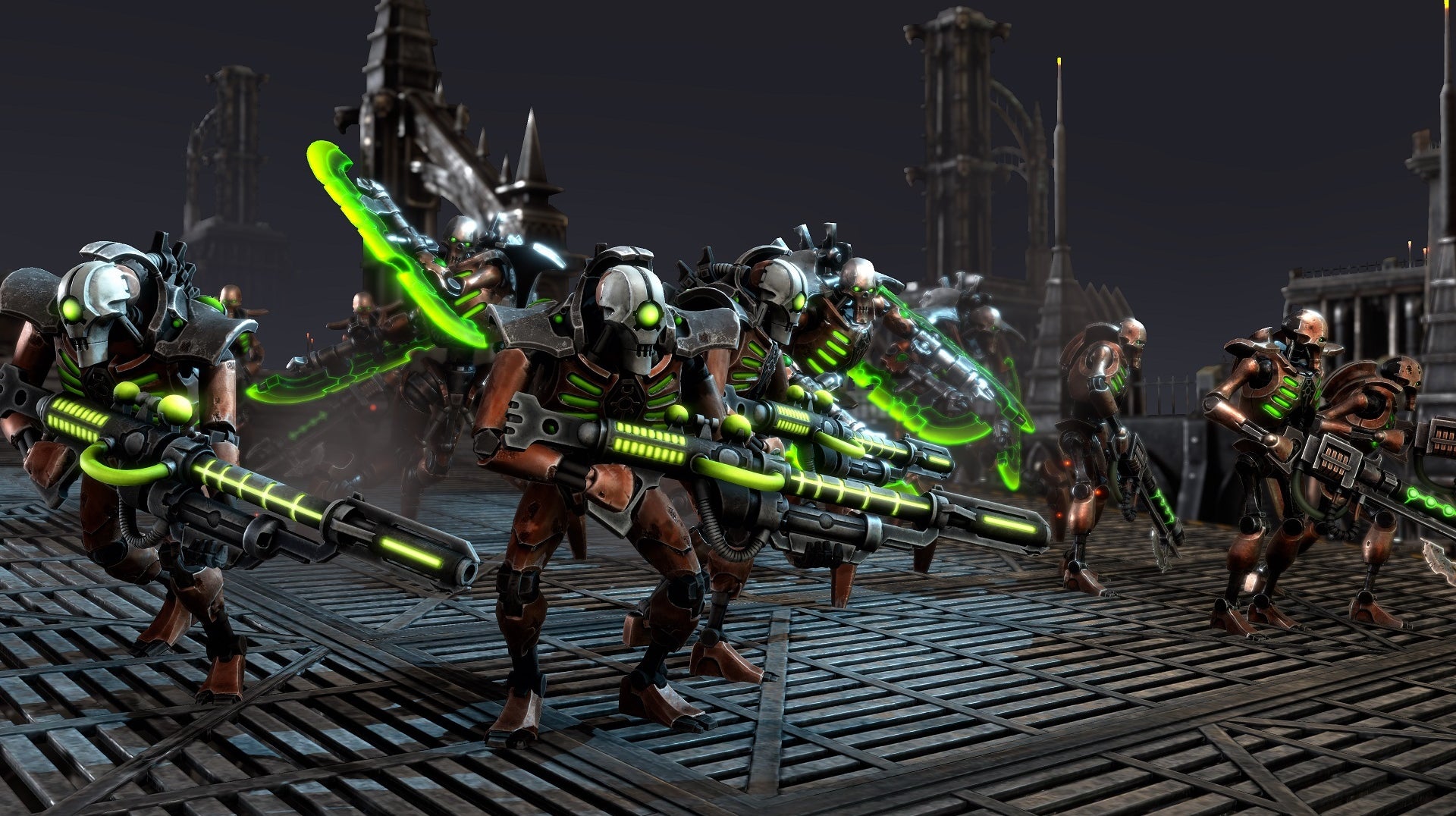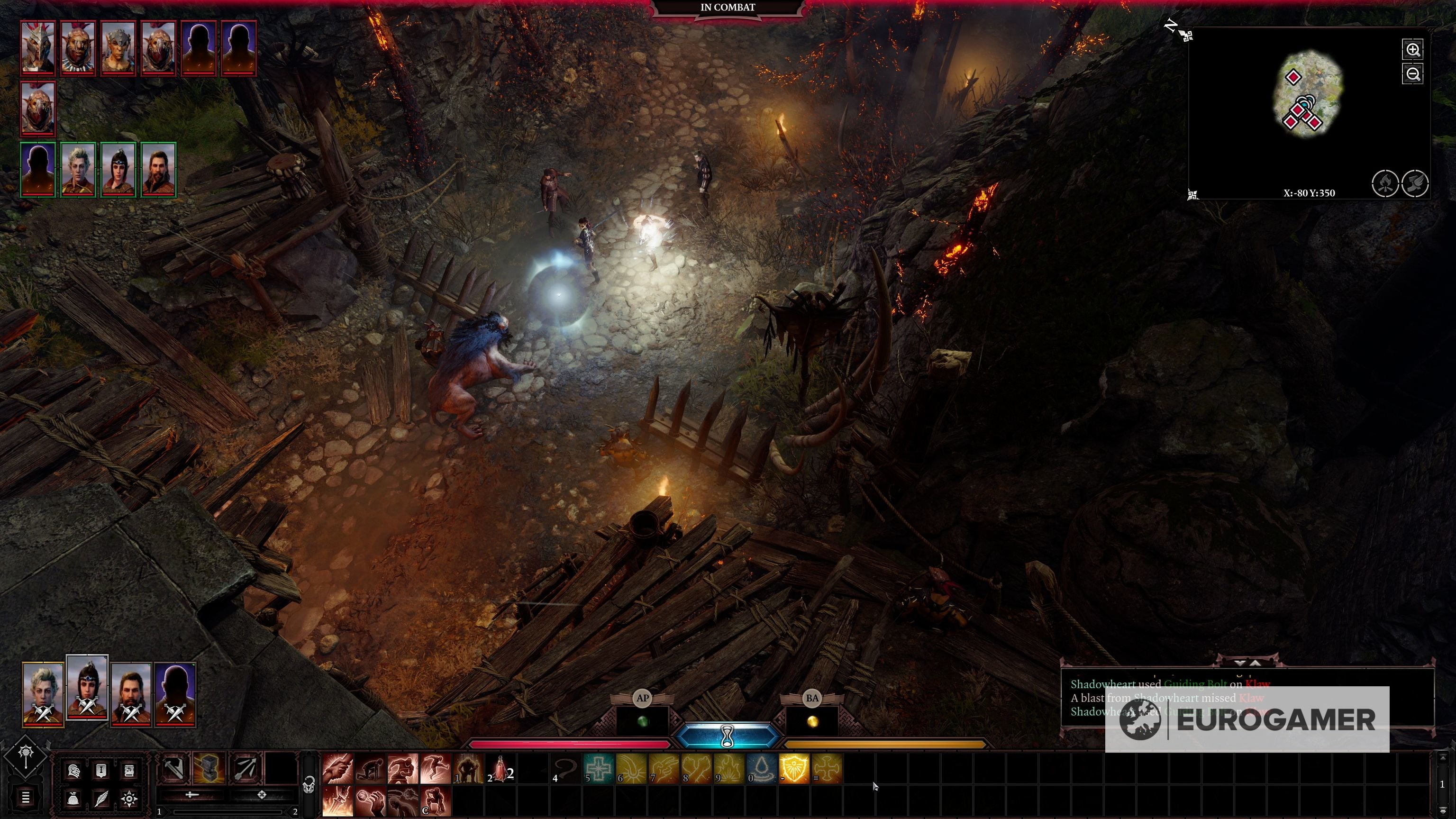D&D inspires creativity, stimulating imaginations through the theatre of the mind. As a popular adaptation target, it left me wondering how game developers capture the spirit of these game. Nick Pechenin, lead systems designer at Larian Studios, happily answered my questions regarding Baldur’s Gate 3, which works off of D&D’s fifth edition. And I didn’t stop there. I can’t claim to be nearly as familiar with Warhammer as I am D&D, but I also approached publisher Slitherine over Black Lab Games’ Warhammer 40,000: Battlesector. Speaking with Battlesector’s executive producer David Sharrock, he informs me, “When we were coming to the end of our plans for Battlestar Galactica Deadlock, the Slitherine and Black Lab teams sat down and had a chat about where we should go next. The Black Lab Games team were looking to make use of their skills in making great strategy games that look amazing and the Slitherine team had already been in discussions with Games Workshop about how to follow up previous 40k Strategy titles like Armageddon and Sanctus Reach.” Soon enough, Black Lab begun exploring a dynamic turn-based strategy game based around the Devastation of Baal. “The Devastation of Baal is a fantastic story of a doomed last stand at the end of an era of the 40k universe,” Sharrock tells me. “It ends with the opening of the Cicatrix Maledictum and the rebirth and arrival of Roboute Guilliman and signals a new start for Baal, the Blood Angels and Dante.” So, they wanted to explore the implications of the Devastation. When it came to adapting gameplay, Pechenin dives deep into development, detailing his team’s role on Baldur’s Gate 3. “What systems design means for us at Larian is working out the rules, the mechanics of the game, realising the classes, all the players options, loot, anything with numbers really, and then assisting all of the other teams looking to make a systemic feature that pops up throughout the whole game,” he says. “It’s a big role but with everything moving ahead, the team initially believed ‘oh, our job is done, right? The books are out, we know D&D rules quite well because we played it before, some of us DM’d it. How hard could it be, right? Just take the book the book, make the machine do what it says in the book, and you’re done, right?’” Pechenin quickly discovered this didn’t work. “There’s several things fascinating things that we learned about deep D&D design,” he explains. “One of the first things that popped up very quickly that you don’t really notice around the table, is that D&D 5th edition is kinda brilliantly designed to take advantage of the whole action happening in the theatre of the mind of the players. They don’t just assume it’s happening there; they mechanically take advantage of player being able to easily fudge things up in their mind.” Using Tieflings performing Searing Smite as an example, Pechenin explains “We were looking at it, and not really recognising it from how we played it at the tabletop when we started really getting into it. Because Searing Smite, which is what you would imagine a character smiting an enemy with their weapon and dealing some fire damage. But when you get into it, what it says is the next time you hit a creature with a weapon attack, you’ll deal additional fire damage and put a damage overtime effect on.” The course of action sounded pretty clear, though Pechenin admits this didn’t work exactly as they’d expected. “When we tried implementing this straightforwardly, that sounded like a buff action, so you buff yourself and that buff says the next time you hit a creature, something will happen. When put in the game, that doesn’t feel like I’m smiting anything at all. Like I’m just right-clicking anything, I didn’t feel like a Tiefling smiting with purpose. I felt like a buffer.” So, what did this tell the team? Pechenin says, “It immediately taught us that tabletop are writing for their medium, they take advantage of everything that is happening in that medium. If our aim is to preserve the feel of the game, to feel like you’re playing tabletop, we’ll have to do a lot of work on deconstructing the rules.” As a result, this required, “examining every little bit, and trying to work out how will this feel in the game framework that we have, how will it evoke the same feelings without necessarily following exactly what works there.” It’s these experiences which left the team re-evaluating their approach. “When we started going through spells, class features, and feats, really kinda pulling them thread by thread. It turned out we have a lot of work to do.” There’s a level of flexibility needed to pull this off successfully in any game, but the way Sharrock describes development makes it sounds like his team had an easier time than Larian. “Warhammer 40k and Battlesector are both turn-based army battles, so we were already natural friends, but we had no desire to just remake the tabletop game. That’s a fantastic game in it’s own right and Games Workshop do an amazing job updating it, keeping the community so full of energy and excitement.” Asked whether they faced any issues in this adaptation, he explains, “The main challenge was to ensure that we carried across the knowledge and expectations of a fantastic fan base, but to also provide a clear and understandable platform for new users who have enjoyed other digital games but who haven’t painted a miniature in their life. The advantage of being in a digital format is that we can perform lots of engagements without having to manually add to-hit bonuses or pick 6’s from a bucket of dice.” With such widespread competition between Warhammer adaptations though, I questioned how they tried making Battlesector standout. In the last two years, we’ve had big-hitters like Necromunda: Hired Gun, Total War: Warhammer 3, Battle Sister, and most recently, Chaos Gate – Daemonhunters. It’s a crowded market that’s not getting smaller anytime soon, especially with Space Marine 2’s surprise announcement last year. Touching upon turn-based gameplay again, Sharrock replies, “There are lots of times where the scene can seem to be static. Our motivation was to firstly make sure that these moments between the action, where the player is planning their moves, felt as much like the amazing dioramas that you see in White Dwarf each month.” Based on this, I’m then informed, “We wanted to ensure that when the action did spring to life it looked amazing and dynamic, which is why we built in a system of multiple moves from the start.” It’s a different story with Baldur’s Gate 3, and I ask Pechenin how difficult it was capturing that flexibility given D&D’s open gameplay. “Extremely difficult,” he replies frankly. “It’s very hard competing with imagination and the most powerful, expressive thing we have: the human language. One human understanding what another human does… for a rules designer making a tabletop game, they can write the thing down and as along as they can express themselves in words, that’s how it works, right? There’s no extra steps required.” Pechenin then offers an intriguing admission, one which meant a lot of the game’s aspects required redoing to match the wider team’s ambitions. He explains, “For us, it turns out that a lot of interesting things spells want to do go against modern programming principles. You want to keep all sections of the game separate from each other, working as fast as they can, so it can all look very nice. But the designers want to do the opposite, they want to put everything together. If you stand in an area where an environmental artist put a light, you should get advantage because this spell feature says so.” Given how you don’t necessarily require maps or miniatures to play in tabletop D&D, I question how Larian’s teams worked together to capture that visual element. Pechenin explains that, “My colleagues had several iterations, several attempts at getting the feel right, and recently we’re happy with the effects.” Perhaps unsurprisingly for an early access release, I’m told they’re still updating visual elements, and there’s a passionate team backing it up. “At every step, there’s a lot of passion from the developers. Basically, for any monster, for any spell, there’s always somebody in our big team for whom this is the monster or spell they really wanted to work on.” So, the real question now is, what comes next for both teams? Battlesector’s recently added Necrons and the free Planetary Supremacy campaign, and Sharrock enthusiastically confirms, “There’s definitely more news coming very soon! We have great plans for Battlesector to both keep expanding the breadth of the game so that players can bring more units and factions to the digital battlefield and also to keep adding depth to our game systems.” Otherwise, Baldur’s Gate 3 isn’t leaving early access until at least 2023 and Pechenin says they’ve still got a lot of work to do. Understandably, he can’t elaborate on specific content, though I’m told, “We’re working on patches that we’re announcing and behind-the scenes there’s a ton of work. We’re cooking up some very cool stuff.” I doubt they’ll add an Eladrin Elf subrace anytime soon but hey, an Arcane Archer can dream, right?

